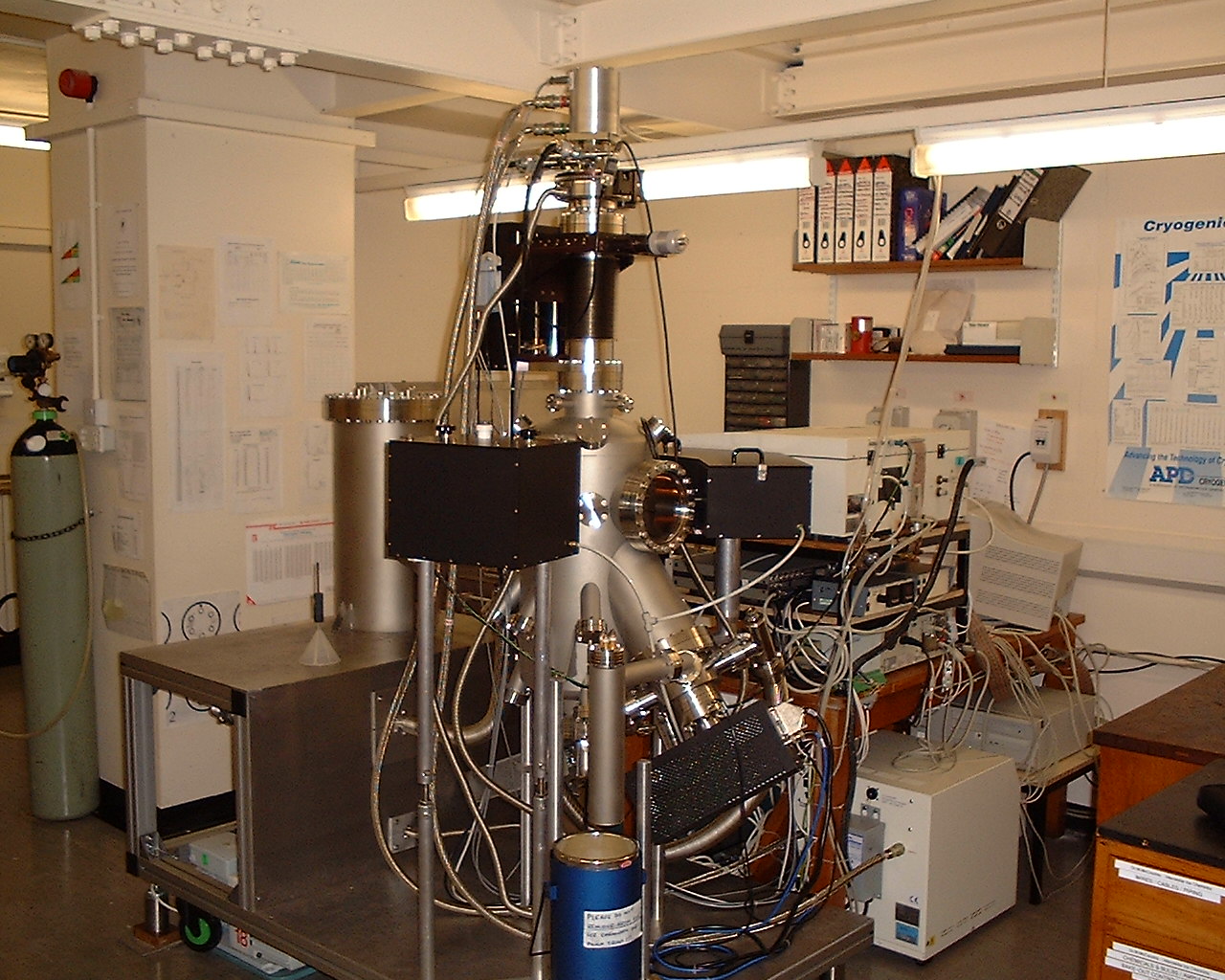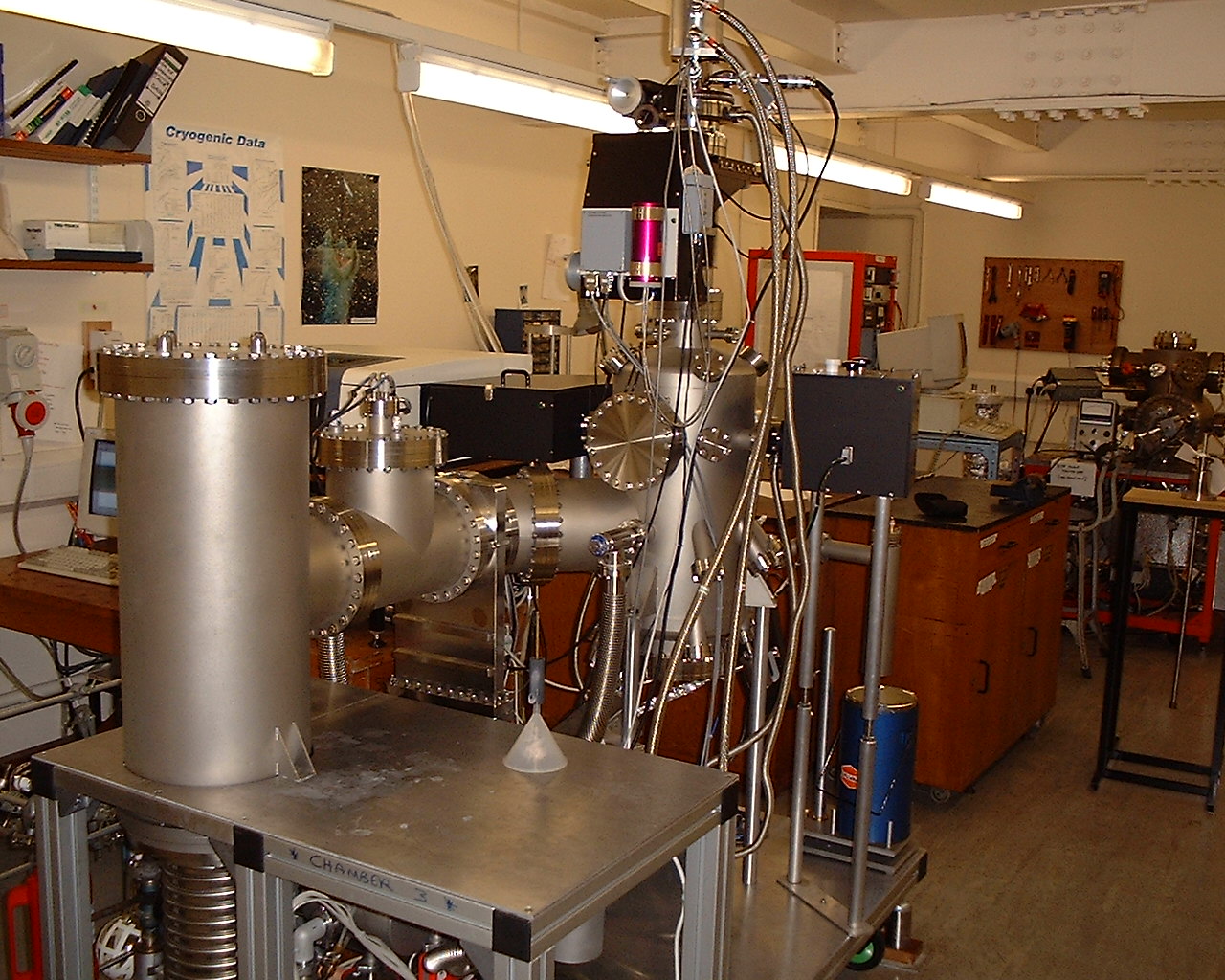The ice grains samples are grown from direct molecular deposition on a
gold substrate at the centre of an Ultra-High Vacuum (UHV) Chamber. UHV
means pressures lower than 10-9 Torr, and this chamber routinely
reaches base pressures around 6 x 10-11 Torr. This corresponds
to a molecular density of <108 molecules cm-3,
around 1000 times denser than in the interstellar clouds. At these pressures
the major constiuent of the vacuum is H2 gas; in the interstellar
medium H and He are prevalent.
The sample is cooled to 10K using a closed cycle helium cryostat and its
temperature can be controlled from 10 to 250 K in 0.1 K steps, and from
250 to 500 K in 1 K steps.
The experiment is designed so that we can change the molecular constituents,
morphology and thickness of the ice samples as they grow. This enables
us to study a wide range of different polar and apolar ices, in both crystalline
and amorphous phases, from sub-monolayer coverages to a film thickness
where the surface behaviour is substrate independent. When adsorbate species
are dosed into the chamber, it is possible to achieve dosing fluxes as
low as 107 molecules cm-2s-1.
The pseudo interstellar conditions that are modelled inside the experimental
chamber are ideal for traditional surface science. This experiment uses
a unique combination of four of these methods that are more commonly used
in catalysis studies and semiconductor research, i.e.
By combining the data from these different experimental methods, we are
able to measure the probability of an adsorbate sticking to the ice surface,
and build a comprehensive picture about the nature of the bonding between
different ices and adsorbates. We can also investigate the effects of heating
and UV radiation on such gas-ice systems. All this information is fed back
to the astronomy community, and is used to enhance our understanding of
the physical and chemical processes occurring in interstellar clouds.

The Surface Astrophysics experiment is part of  Nottingham Astronomy Research Forum
Nottingham Astronomy Research Forum
and is based in the Surface
Science Group in the School
of Chemistry at the University
of Nottingham
These pages were last updated 14/10/01

